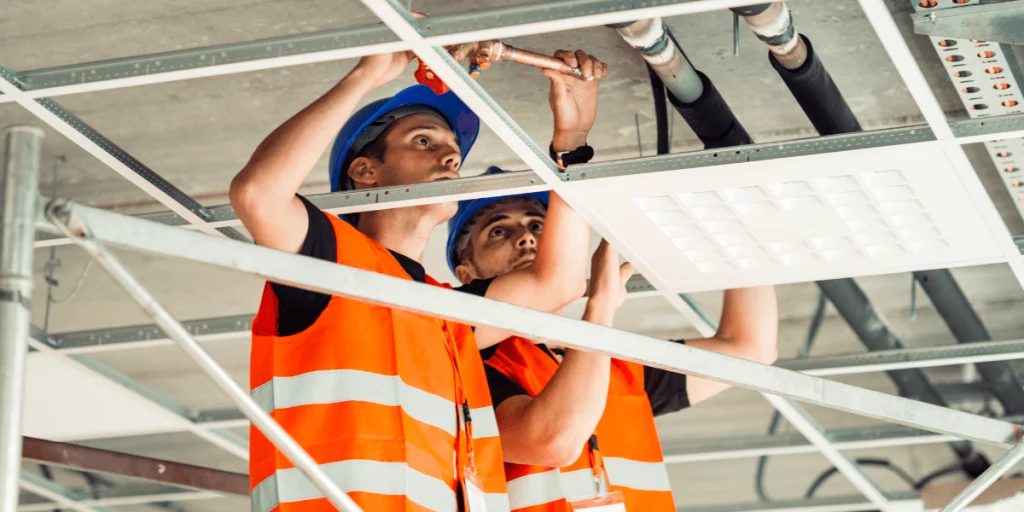Before we get into detailing the 7 steps of autonomous maintenance, let’s first get into what autonomous maintenance is and the benefits of putting it into practice.
What is Autonomous Maintenance?
Autonomous maintenance (AM) is a maintenance strategy that gives machine operators responsibility for basic upkeep tasks of their equipment and machinery. For example, this includes equipment and machine cleaning, inspection, and lubrication. This enables technicians to focus on more complex maintenance tasks.
Autonomous maintenance is the first pillar in the Total Productive Maintenance (TPM) strategy and is the fourth pillar in the World Class Manufacturing (WCM). Essentially, autonomous maintenance empowers machine operators with the right training so that they can identify quality issues and take immediate action to resolve them independently. That is to say, machine operators who are trained in autonomous maintenance have the appropriate technical skills required for conducting routine inspections and standardizing an autonomous inspection schedule.
Autonomous maintenance follows two core principles:
- 1. To extend the lifespans of equipment and machines through proper operation, and
- 2. Bringing equipment and machines to, and keeping it at, “like new” conditions through restoration and proper maintenance management
Therefore, autonomous maintenance relies on machine operators knowing when an equipment or machine upgrade is necessary. Also, when an easy fix can get the equipment or machine up and running again as soon as possible. Moreover, the ultimate goal of TPM is to improve and enhance your organization’s overall equipment effectiveness (OEE). So, by training operators in autonomous maintenance, OEE is further maximized through the minimization of equipment breakdowns and failures.
What are the benefits of autonomous maintenance?
Implementing autonomous maintenance into your organization is beneficial for many reasons. It:
- — Prevents small issues from becoming bigger problems, i.e. prevents equipment breakdowns and failures
- — Enables technicians to focus on more critical and complex maintenance tasks
- — Increases operator knowledge of their equipment and machines
- — Ensures that equipment and machines are in “like new” conditions through proper cleaning and lubrication
- — Improves employee collaboration
- — Improves employee engagement
- — Improves overall safety
What are the 7 steps of autonomous maintenance?

Depending on your plant’s operations, implementing autonomous maintenance may vary slightly. But, it is typically broken down into seven steps. So, here is how you implement autonomous maintenance, also known as the 7 steps of autonomous maintenance.
Step 1: Increase operator knowledge
The first of 7 steps of autonomous maintenance is to empower operators with the knowledge on how to operate and maintain their equipment and machines. That is to say, for autonomous maintenance to be effective, operators need to know the ins and outs of their equipment and machines. You can leverage modern digital tools to train and guide your operators to learn about the equipment and machines themselves, and to perform maintenance tasks. In short, operators should have four equipment-related skills:
- 1. Detecting abnormalities
- 2. Resolving abnormalities
- 3. Setting ideal equipment conditions
- 4. Maintaining these ideal equipment conditions
Step 2: Perform initial inspection and cleaning
The second of 7 steps of autonomous maintenance involves inspecting equipment and machines, and identifying if any cleaning or maintenance is required. In essence, this step is where equipment and machines are restored to a “like new” condition. So, machine operators should look for and correct things like:
- — Leaks
- — Loose nuts and bolts
- — Removal of dust and dirt
- — Proper oiling and lubrication
- — Wear and tear
For this step, by implementing standardized work instructions and digitized checklists, this provides accurate step-by-step guidance for your operators to perform basic routine upkeep tasks.
Step 3: Eliminate causes of contamination
After the initial inspection and relevant cleanings of all equipment and machines are done, it’s important to make sure it doesn’t get to a poor state again. This can be done by minimizing or eliminating all the possible causes of contamination. What’s more, if your organization utilizes digital tools, this would be a great opportunity for you to capture these activities and note it down into a knowledge base for future operations.
Step 4: Create standards for cleaning, lubrication, and inspection
The fourth of 7 steps of autonomous maintenance involves defining what operators will clean, lubricate, and inspect, how they will do it, and how often the upkeep tasks should be performed. As a result, this ensures that equipment and machinery remains operational and are in peak conditions. However, it is important to note that this step can be adjusted as needed based on the equipment or machine, and the operator. Once finalized, all standards should be documented, whether on paper or even better, digitally, and made readily accessible to your operators.
Step 5: Conduct inspection and monitoring
Once your operators have a set of standards to follow to help guide them to perform their basic upkeep tasks, they can modify them to streamline and improve tasks, and perform them independently. Additionally, during this step, your operators can provide information in the form of inspection reports with attached images to detail the current condition of the equipment, or machine, and maintenance tasks completed.
Step 6: Standardize visual maintenance
The sixth of 7 steps of autonomous maintenance requires you to make it easy for your operators to complete maintenance tasks. In other words, you should provide your operators with visual aids that reinforce standards and helps them understand everything in regard to the equipment or machine. For example:
- — Identifying the flow of fluids through pipes
- — Using transparent coverings instead of opaque ones wherever possible
- — Labeling the opening and closing direction of valves and levers.
In short, make things on the equipment and machines as obvious as possible.
Step 7: Establish continuous improvement
The final step of the 7 steps of autonomous maintenance is to create a culture of continuous improvement. This means, from time to time, you should take a step back and identify improvement opportunities. This ensures you’re operating at optimal levels. Furthermore, by keeping track of equipment and machine failures, you can help maintenance engineers design future equipment and machinery that is easier to access and maintain.
Your team leads and maintenance technicians can also participate in continuous improvement by routinely auditing your operators’ work. In addition to allowing them to point out improvement opportunities, they can also recognize and congratulate your operators on performing well.





